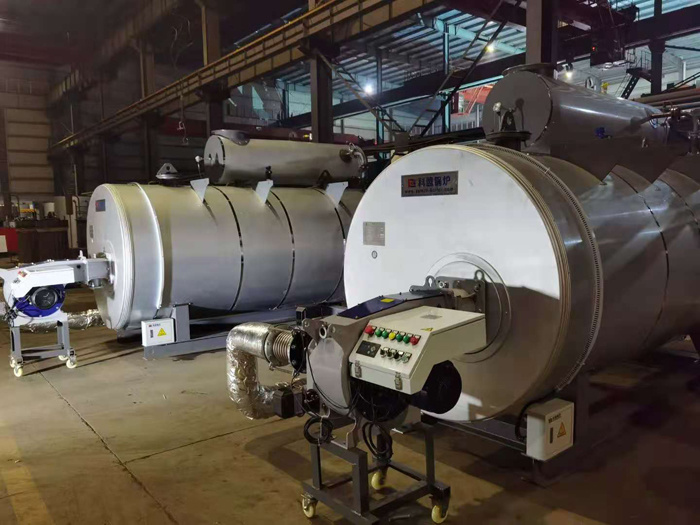Hot water boiler operating principle
Release time:
2022-06-06
Hot water boilers are important thermal energy supply equipment in the national economy. Industries such as electricity, machinery, metallurgy, chemical engineering, textile, papermaking, and food, as well as industrial and civil heating, all require hot water boilers to provide large amounts of thermal energy.
Hot Water BoilerIt is an important thermal energy supply equipment in the national economy. The power, machinery, metallurgy, chemical, textile, papermaking, food and other industries, as well as industrial and civil heating, all require hot water boilers to provide a large amount of thermal energy. Let's learn about the working principle of hot water boilers below.

A hot water boiler is a device that uses the heat energy released by fuel combustion or other energy to heat the working medium (intermediate heat carrier) to certain parameters. A boiler used to heat water to convert it into steam is called a steam boiler, also known as a steam generator; a boiler used to heat water to increase its temperature to convert it into hot water is called a hot water boiler; a boiler used to heat organic heat carriers is called an organic heat carrier boiler.
From the perspective of energy utilization, a hot water boiler is an energy conversion device. In the boiler, the chemical storage of primary energy (fuel) can be converted into heat in the combustion products (flue gas and ash) through the combustion process, and then converted into the intermediate heat carrier (water and steam) through the heat transfer process, transferring heat to the heating device.
This intermediate heat carrier that transfers heat belongs to secondary energy because its purpose is to provide energy for energy-consuming equipment. When the intermediate heat carrier is used for thermal energy conversion in a heat engine, it is called a "working fluid". If the intermediate heat carrier only transfers and provides heat to the thermal equipment for thermal utilization, it is usually called a "heat medium".
Hot Water BoilerAccording to its Applications, we can develop it into four categories: power plant boilers, industrial hot water boilers, ship boilers, and locomotive boilers. The first two are also called stationary boilers because they are installed on the fixed asset base of the enterprise and cannot be moved. The last two are called mobile boilers. This book mainly introduces stationary mechanical industrial and boilers.
Hot water boilers mainly carry out three processes:
(1) Combustion of fuel in the furnace, its chemically stored energy is released in the form of thermal energy, causing the flame and combustion products (flue gas and ash) to reach high temperatures.
(2) High-temperature flames and flue gas transfer heat to the working fluid (heat medium) through the "heating surface".
(3) When the working fluid (heat medium) is heated, its temperature increases or it vaporizes into saturated steam, or is further heated into superheated steam.
The above three processes are interconnected and can be carried out simultaneously, realizing energy conversion and transmission. Along with energy conversion and transfer, material flow and change also occur:
(1) Working fluid, such as feedwater (or returning water to the hot water boiler in the form of steam (or hot water).
(2) Fuel, such as coal, burns in the furnace, its combustible part burns together with the original water content and is converted into flue gas, and its original ash content remains as ash residue.
(3) Air enters the furnace, oxygen participates in the combustion reaction, and excess air and the inert gases remaining from the reaction are mixed into the flue gas and discharged.
The water system, ash system, and secondary flue gas system of a car areHot Water Boilerthe three main systems, and the work of these three systems is carried out simultaneously.
Generally, the processes carried out on the side of these fuels and flue gases (including combustion, heat release, slag removal, gas flow, etc.) are collectively referred to as "in-furnace processes"; the processes of water and steam (water and steam flow, heat absorption, vaporization, steam-water separation, thermal chemical processes, etc.) are collectively referred to as "in-boiler processes".
The above is an introduction to the working principle of a hot water boiler. If you need to learn more, please feel free to Contact Us! Our company has many years of experience and is always looking forward to your participation.
Latest News




